Also in this Edition
- Viewer Mail
- The Usual Announcements
- Personal Appearances
- Next Time in Cameracraft
Photographing the Northern Lights
I receive a lot of requests around Aurora Borealis season asking for tips for photographing the Northern Lights. I usually tell them that it's no different from doing any other kind of long exposures - but you have to do a few extra things to make it look the way it looked to your eyes.
1) Shoot RAW. This is because RAW files are more maleable that .jpgs, plus it's almost impossible to know what white balance setting to use. When you shoot RAW you can determine the white balance when you open the file. (As always, click on any image to view larger and sharper.)
 |
| My very first Northern lights picture. This is the .jpg straight from the camera. The image looked much greener than it looked to my eye. |
 |
| Manipulating the .jpg to get it to look more like my eye saw it allowed for a small shift in color. |
 |
| Manipulating the RAW file allowed for much greater manipulation and color shift. Now it looks a littel closer to how it looked to my eye. |
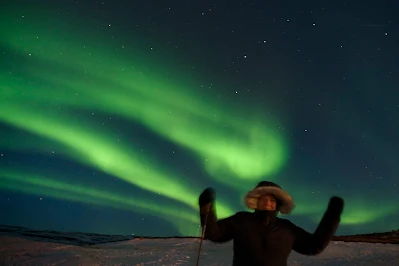 |
| 10 second exposure, f/4, ISO 640, A7R. Subject had to hold still. |
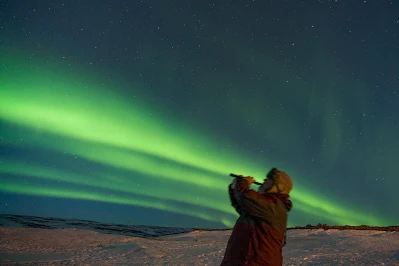 |
| Same as above. Was hoping to use this as a Xaphoon advertisement. |
The above video was taken on the back of a moving ship. It consisted of a string of 10-second exposures, assembled into a video later on.2) You can get truly spectacular images by shooting multiple shots as a panorama and merge them on your computer. (Photoshop makes this a one-step operation via FILE --> AUTOMATE --> PHOTOMERGE...)
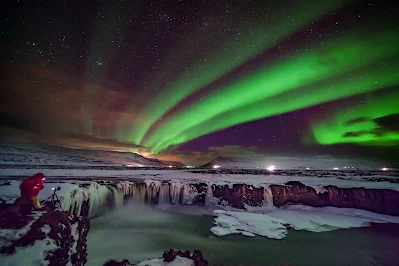 |
| 20s, f/4, ISO 2500. A7R II |
 |
| Same; pointing different direction |
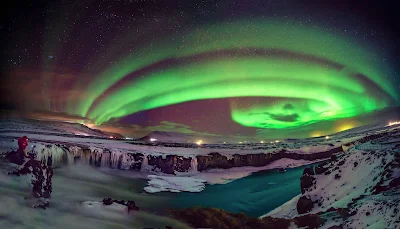 |
| Merged in Photoshop |
3) In a pinch, your smartphone will very likely do a better job than your bigger camera under marginal conditions. (See
my blog post from February for a good example of this.)
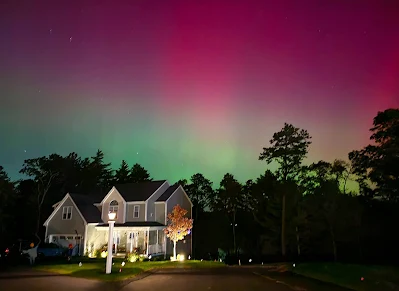 |
| Samsung Galaxy S23 Ultra. No tripod. Couldn't see it with the naked eye!! |
Upcoming Appearances
September 19 - 6 PM Talk for the Digital Dimensions Camera Club in Kansas City, Kansas (as a prelude to the seminar that will be held there that weekend). I'll be giving a live demonstration of wireless flash and how it's the single best tool for adding "Wow!" to your images! 5400 W 75th Street, Prairie Village, Ks.
Oct. 2nd – 7 PM talk at Duxbury Camera Club – Computational Photography. 77 Alden St. Duxbury, MA 02332 Ask Mari Ryan Photos mari@mariryanphotos.com permission to attend if you’re not a member.
Oct. 7th – Lynn Photo Club 6 PM – Talk on Computational Photography (hey, it’s a popular topic!) 564 Boston Street, Lynn, MA 01905.
Oct 15th – Computational Photography talk over Zoom (for a club in the UK; but you can attend – who’s going to know? 😊 ) Email me for the link.
Nov. 2nd – Lynn Photo Club 1 PM – Wireless Flash Workshop. 564 Boston Street, Lynn, MA 01905. There’s a fee. Contact 978 664-2620 Susan Mosser cell 978 337 3258
S.JMosser@comcast.net if you’d like to attend.
Nov. 8th - 15th - we're off to Africa for the Photo Safari. Two beds have just opened up - contact me for details! (Gary at Friedman Archives dot com)
From there I'm off to Uganda, for a photo assignment I'll tell you about after I return.
Will I see you at any of these events??
Next Seminar
Are you a member of a photo club? Have your president contact me regarding giving zoom lectures or actually bringing the seminar to your city!
Next Time in Cameracraft
In the next edition, Claire Osborne describes how her portraits of people with PTSD and eating disorders can be a healing endeavour. "Having spent the last 27 years of my life living with a husband suffering from military PTSD gave me so much insight into life with mental health disorders, it has helped me and some of the people I have worked with to show the world parts of them that many keep
hidden. For me at least I have found this to be a healing experience, and from the messages I receive it helps so many others to understand they aren't alone."
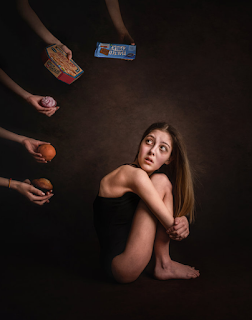 |
| Also therapy for those suffering from eating disorders. |
Viewer Mail
Q: Why wireless flash? Why not just use continuous lights like in the old days?
A: Well, you could use continuous lighting like the movie studios use. They are big and heavy and consume a lot of power. Flashes are great for the traveling photographer because they're small, light, and only put out light when needed - at the very moment of exposure. They run on AA batteries. And they're significantly more powerful during that moment of exposure than a continuous light.
As proof of that last sentence, have a look at this product review I made at a studio LED light. When using it to take portraits it put out far less light than a smaller flash - I had to use a longer shutter speed: https://youtu.be/DQsYTPWkyxA
Q: I have been working with computers for all my working life and have lots of files and folders arranged in some manner so I can retrieve them . Some pictures I take I can save according to locations or topics, but many random pictures are just not definable to a specific subject, and they end up in a general folder with an esoteric number as a name. Finding a picture in a later time is daunting.
How do you store what must be 10000's of pictures in a fashion that you can find a specific picture years later?
A: Hi, Michael. You ask a good question. There are two ways you could solve this problem:
1) The old fashioned way: Use a program such as Lightroom, Photo Mechanic, ACDSee, etc. (there's a lot of them out there) which employs a database. Caption and keyword all of your images (including people, actions, places, etc.). Do a keyword search everytime you want to find your images.
2) Upload everything you consider "good" to Google Photos. Google Photos analyzes the images, tags people in the images, identifies objects, and then do a keyword search everytime you want to find your images. No need to flitter away the gift of consciousness captioning and keywording.
(I'm sure there are photo management packages that reside on the desktop that can analyze the images like Google Photos does... if you know of such a package, let's hear it in the comments!)
Until next time,
Yours Truly, Gary Friedman
















I use Picasa to catalog and track my photos. It is no longer supported by Google and has eliminated some functionality, but it's a capable and free program for managing my many thousands of images.
ReplyDeleteA free open source program for panorama photo stitching called Hugin is worth mentioning.
ReplyDeleteYou don't mention this Sony feature in your article on shooting northern lights, but switching on Bright Monitoring makes a huge difference (to me) in shooting auroras. I can actually see what I'm going to get. Do other camera brands have similar monitor modes?
ReplyDeleteI've used Bright Monitoring in the past when trying to focus and compose in extremely dark environments, but have never needed it when shooting auroras. No harm though. :-) I'm honestly not sure if other brands offer a similar feature. Maybe Tony Phillips (author of the Fujifilm and OM System books) can chime in here.
DeleteNice to see that you're happy, productive, and on the road again.
ReplyDeleteGreat issue, Gary. Very helpful.
ReplyDeleteAdobe Bridge is quite a useful, free, app for managing your photos
ReplyDeleteYes, Bridge is free now and I certainly should have included it in my list! Thanks for that reminder.
DeleteThere is a tool named Exire Foto, which is abel to analyze local photos and tag it like Google or OneDrive. You can search for tags in many ways. It has some AI capabilities which are really nice.
ReplyDeletehttps://excire.com/en/
Nice! I've been looking for software that does automatic keywording on the desktop similar to what Google Photos does. Hope to find time to give this a try!
DeleteGood
ReplyDelete